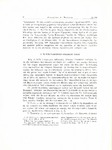| dc.creator | Μυλωνάς, Γεώργιος Ε. | el |
| dc.date.accessioned | 2015-05-05T13:40:15Z | |
| dc.date.available | 2015-05-05T13:40:15Z | |
| dc.date.issued | 1966 | |
| dc.identifier.uri | http://hdl.handle.net/11615/3511 | en |
| dc.description.abstract | Tsouutas in 1895 proved that the extreme northeast section of the citadel
was a late addition and pointed out the southeast corner of that citadel (Plate 3 a)
from which started the original Northeast Cyclopean wall. The course of that
wall, however, was not determined and in our days what were taken to be two
Cyclopean retaining walls by early excavators (Fig. 1, α. β. γ), were assumed to
have belonged to it and its course was indicated by a straight line (Fig. 1, δ).
Our investigations proved that not only the beginning of that wall at the southeast
corner of the citadel was preserved but that also a few of its blocks have
remained in situ, giving the right direction of its course (Pis. 3, a. β. y. δ. and 4).
Two additional blocks (Fig. 3, Nos. 5 and 6) found in situ, the surface of
the rock worked to receive its foundation blocks (PI. 5 and Fig. 4) as well as
the turn eastward of the North Cyclopean Wall (PI. 6a) enabled us to determine the exact course of the original Northeast Cyclopean Wall (Fig. 2). There
is a possibility of the existence of a Postern Gate at the north end of that wall
(Fig. 2, E the dotted area). The wall was demolished when the extension was
built and its stones were used for the construction of that extension. Then the
inner face of the North Cyclopean Wall was relined and the area between it
and the rock formation to the south was filled with loose stones and earth (Figs.
6 and 7) to form the understructure of a road that, going along the wall, terminated
above the Postern Gate.
Some 2 meters to the east of projection Δ exists the retaining wall K
(Fig. 2). The north end of that wall was built in Mycenaean times to protect
the entrance to the subterranean cistern and to hold the stone fill of the road.
We excavated the deep area behind its north end, area AK (Fig. 2), and obtained
the sherds illustrated in Figures 11 and 12. The study of the layers of this fill
proved that the area was filled at one and the same time after the construction
of the wall; the lowermost layer therefore was taken from the surface of the
area dug to provide the earth iised to fill the section behind the wall; the
sherds of that layer will indicate the date of its construction. The latest of these
sherds, Figure 12, Nos. 7-9 and 11-19, certainly belong to the closing years
of LH III B if not to the beginning of LH III C. Thus, in the closing years
of LH III B or the early years of LH III C was built the Mycenaean part of
retaining wall K. It is impossible to state whether the subterranean cistern was
also built at that time. If it was built at the same time as the retaining wall
or shortly before it, its construction must be placed at the very end of LH III B.
The other so-called retaining wall in the area of the Northeast Extension
(Fig. 1, a and β wall SA) proved not to be a retaining wall at all but stones
that fell from the Cyclopean Wall resting on an accumulation of earth some
1.S5 m. in depth (PI. 7). In 1964 below that earth we found the basement of
structure A of the closing years of the Mycenaean Age (Plan B and Fig. 95).
The demolition of the original Northeast Cyclopean Wall took place when
the Northeast Extension was constructed, at the very end of LH III B. For the
construction of the Extension see infra. | en |
| dc.language.iso | el | en |
| dc.publisher | Η εν Αθήναις Αρχαιολογική Εταιρεία | el |
| dc.rights | Attribution-NonCommercial-NoDerivatives 4.0 International | en |
| dc.rights.uri | http://creativecommons.org/licenses/by-nc-nd/4.0/ | en |
| dc.subject | Northeast cyclopean wall | en |
| dc.subject | Citadel of Mycenae | en |
| dc.subject | Archaeology - Archeology | en |
| dc.subject | Βορειοανατολικό κυκλώπειο τείχος | el |
| dc.subject | Ακρόπολη Μυκηνών | el |
| dc.subject | Αρχαιολογία | el |
| dc.title | Το βορειοανατολικόν κυκλώπειον τείχος | el |
| dc.type | journalArticle | en |
| heal.recordProvider | Πανεπιστήμιο Θεσσαλίας - Βιβλιοθήκη και Κέντρο Πληροφόρησης | el |
| heal.journalName | Αρχαιολογική εφημερίς : εκδιδομένη υπό της εν Αθήναις Αρχαιολογικής Εταιρίας | el |
| heal.fullTextAvailability | true | en |
| dc.rights.accessRights | free | en |
| dc.identifier.bibliographicCitation | Αρχαιολογική Εφημερίς, 1962, Τόμος 101, 2-26. | el |



